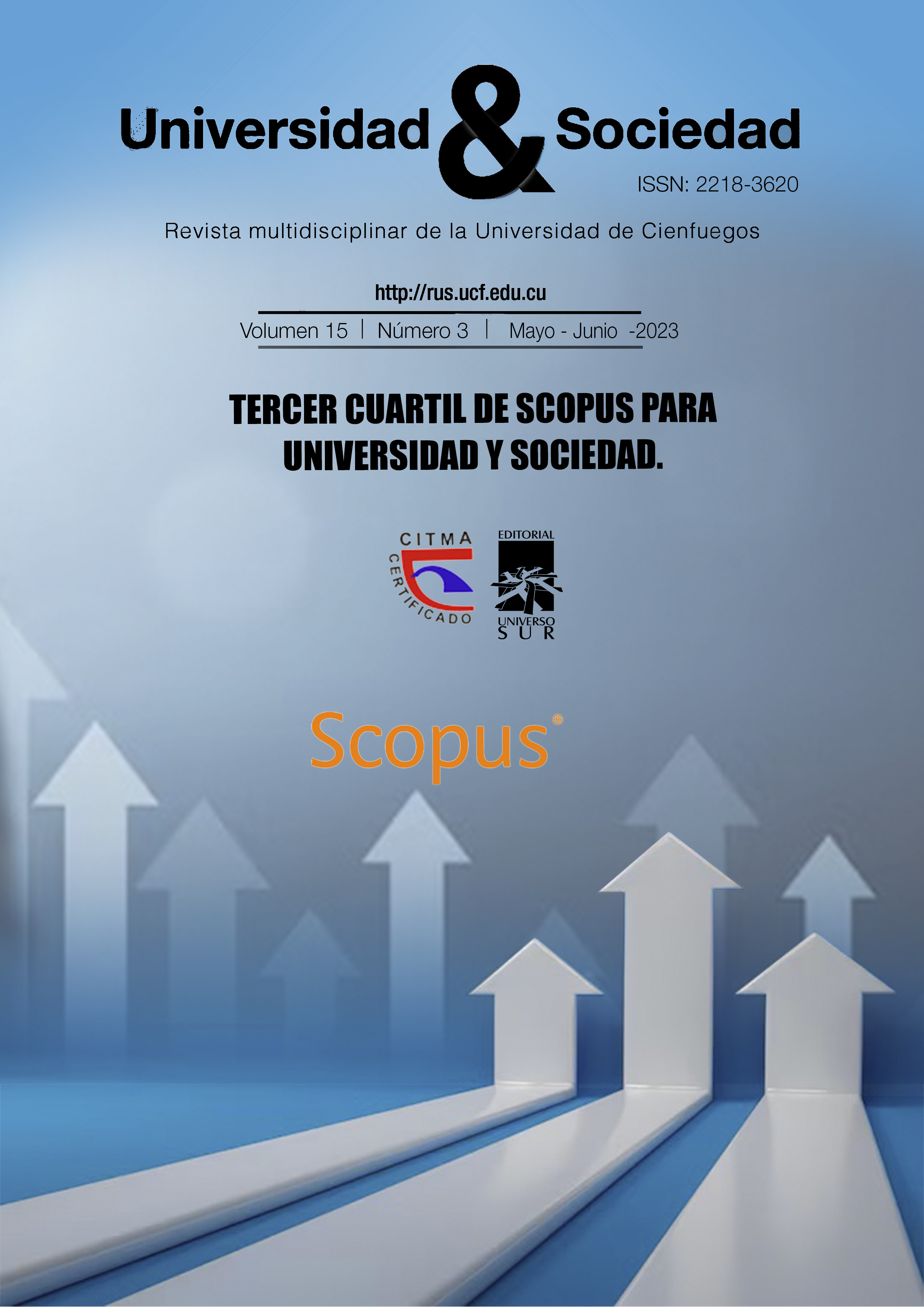Análisis de estados financieros, como herramienta útil para la gestión financiera tras la pandemia COVID 19
Abstract
El análisis financiero es una herramienta que permite realizar cotejos relativos de distintos negocios y facilitar la toma de decisiones de inversión, ingresos, beneficios, capital de trabajo, financiación, planes de acción, control de operaciones, entre otros. La investigación se trazó como objetivo alcanzar una caracterización diagnóstica que posibilite a los actores económicos comprometidos con la organización o directamente actuantes la adopción de las decisiones con mayor nivel de pertinencia. La investigación se concibió sobre la base del paradigma de positivista investigación. Se aplicó un diseño no experimental de corte transversal y de nivel descriptivo, apoyado en el análisis documental disponible. El muestreo desarrollado posibilitó identificar 600 sujetos correspondientes a micro, pequeños y medianos empresarios. El estudio aplicado a las empresas industriales indica que en el año 2019 alcanzaron el 46,11%, en el 2020 bajó al 43,96% -debido a la pandemia- y en el 2021 el margen subió al 46,04%, lo que implica que en la época crítica las empresas debieron estar pendientes de las amenazas por la caída de las ventas, la disminución de los márgenes de utilidad y el incremento del periodo medio de cobro. Se concluye que el proceso de planeación debe integrar la planificación estratégica y financiera, la primera va desde la definición del negocio hasta la determinación de objetivos y estrategias, incluyendo al análisis prospectivo, la segunda toma como principal plus la planificación estratégica y desde allí se inicia la cuantificación monetaria hasta los estados financieros analizados y proyectados, para una correcta toma de decisiones.
Palabras clave: análisis, post-COVID, industria, ratios financieros, información financiera.
Abstract
Financial analysis is a tool that makes it possible to make relative comparisons of different businesses and facilitate decision-making on investment, income, profits, working capital, financing, action plans, and control of operations, among others. The objective of the research was to achieve a diagnostic characterization that would enable the economic actors involved in the organization or directly involved to make the most relevant decisions. The research was conceived on the basis of the positivist research paradigm. A non-experimental, cross-sectional and descriptive design was applied, supported by the available documentary analysis. The sampling made it possible to identify 600 subjects corresponding to micro, small and medium-sized entrepreneurs. The study applied to industrial companies indicates that in 2019 they reached 46.11%, in 2020 it dropped to 43.96% -due to the pandemic- and in 2021 the margin rose to 46.04%, which implies that in the critical period the companies had to be aware of the threats due to the fall in sales, the decrease in profit margins and the increase in the average collection period. It is concluded that the planning process must integrate strategic and financial planning, the first goes from the definition of the business to the determination of objectives and strategies, including prospective analysis, the second takes strategic planning as the main plus and from there starts the monetary quantification until the financial statements are analyzed and projected, for correct decision making.
Keywords: analysis, post-COVID, industry, financial ratios, financial information
Downloads
Published
How to Cite
Issue
Section
License
La editorial "Universo Sur", de la Universidad de Cienfuegos, publica el contenido de la Revista "Universidad y Sociedad" bajo una Licencia Creative Commons Atribución-NoComercial-SinDerivar 4.0 Internacional.
© Podrá reproducirse, de forma parcial o total, el contenido de esta publicación, siempre que se haga de forma literal y se mencione la fuente.










